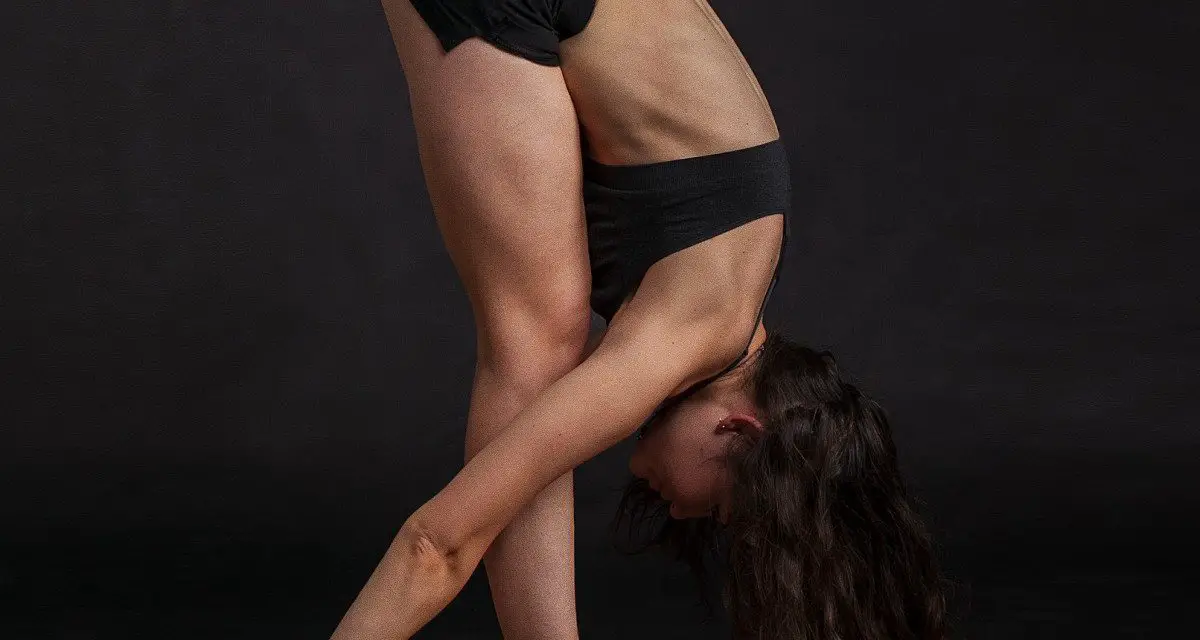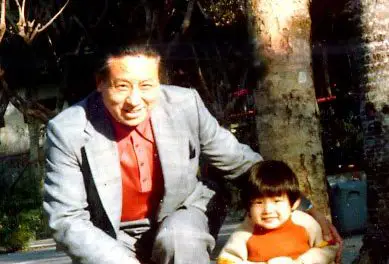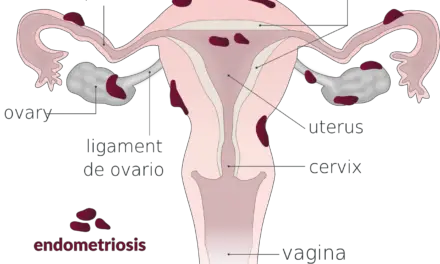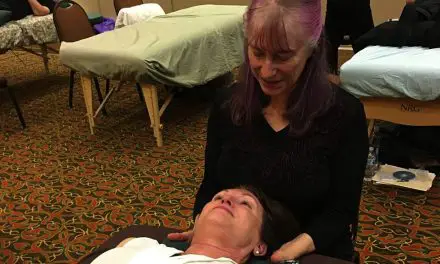If you have experienced back stiffness, chances are, the experience is more than just “stiff” muscles or joints. Pain researchers from The University of South Australia recently published their study that suggests low back stiffness does not necessarily reflect actual stiffness of the low back muscles or spine. Rather, the stiffness that you feel is more likely a perception of the nervous system, a way to protect your back from danger whether it is real or perceived.
The team of researchers, led by Dr. Tasha Stanton from the University of South Australia, concluded in a 2017 study, “Here we show that a conscious experience of feeling stiff does not reflect true biomechanical back stiffness, but may rather represent a protective perceptual inference that may serve to reduce movement and re-injury. By showing that feelings of stiffness do not relate to biomechanical stiffness measures and that biomechanical measures of stiffness do not differ between those with and without feelings of stiffness, this suggests that information other than actual joint stiffness is influencing this perceptual inference.” (1)
While it appears that they are implying that the stiffness sensation is “all in your head” or not real, this is not what the researchers mean. Rather, the effect size of the study than it seems.
“All of our sensations (pain, stiffness, soreness) are, indeed, all in our head, but not quite how you might imagine. These sensations are all in our head because if we didn’t have a brain, we wouldn’t consciously feel them,” Dr. Stanton explained in an email interview with Massage & Fitness Magazine. “However, by saying ‘all in our head’, we are NOT implying or saying that these sensations are not real. These sensations are definitely real. Rather, we are referring to the complex processes that occur to create those sensation—the integration of relevant information that our central nervous system undertakes which then allows a certain perception to come into our conscious awareness.
“For example, the best knowledge from neuroscience suggests that pain occurs when there is sufficient evidence that the body is in danger (real or perceived) and that it needs to be protected. It is possible that a similar thing may be occurring for feelings of stiffness.”
Dr. Stanton addressed another research by Dr. Dan Harvie and his colleagues from The University of South Australia that people can perceive neck pain in a virtual reality when they “rotate” their neck in the virtual world farther than they normal could in the real world. (2)
“Using virtual reality and giving them inaccurate visual feedback, Dr. Harvie found that the point at which pain came on could be altered,” Dr. Stanton described. “If he provided visual input that they had not turned their head as far as they actually had, pain came on later in rotation.
“However, if he provided visual input that they had turned their heads further than they actually had, pain came on sooner in rotation. This suggests that the pain coming on at a certain degree of neck rotation is less about what is going on in the joints and more about where you perceive your neck to be (informed by vision).”
Having experienced back stiffness herself, Dr. Stanton had thought that there was something wrong with her joints. Au contraire, her research founded that her assumption was wrong, and back stiffness is more complex than many people had thought.
“It is not saying that information from the joints do not contribute at all, but rather that there are many other types of information that seem to be important in generating this feeling.”
How was the back stiffness experiment conducted?
Dr. Stanton and her colleagues ran three experiments. The first experiment consists of 15 subjects with nonspecific low back pain for more than three months.
“We objectively measured two types of back stiffness using a specialised machine called the Indentor. In brief, participants lie on their stomachs and the Indentor provides a standardised force to the spinous process of a lumbar vertebrae (basically it’s a probe pushes into the spine). While the Indentor does this, it also discretely measures how far the probe moves.
“This is very similar to the anterior-posterior spinal pressures that have been used clinically in fields, such as physiotherapy, to guide treatment decisions. In our case, we provided the force over the L3 vertebrae because this was a commonly reported location of feeling spinal stiffness.
“We used two different types of measures. The first was a measure of the global bulk stiffness. This is the slope of the force-displacement curve as we apply the force. The steeper the slope, the more objectively stiff the back is (i.e., the force rapidly increases with very little displacement of the probe).
“The second measure that we used considered the relationship between force and displacement when the chosen force level (e.g., 60 Newtons) was held for one second. In this way, this objective measure captured an aspect of tissue dynamics that may feasibly relate to feelings of stiffness—creep in the tissues with sustained force (the less creep, the more stiffness).
“We were interested in evaluating these measures because they have been shown to be reliable and also, changes in these measures occur in people that respond to spinal manipulation, which is a treatment that aims to target pain and stiffness.
“We did not require subjects to lack lumbar range of motion, rather we merely required subjects to report feelings of back stiffness. Also it is important to note that many times, the relationship between lumbar range of motion and feelings of stiffness isn’t isomorphic—that is, people can often have full range of motion, but feel stiffness in their back while doing the motion.”
The researchers found that those with low back pain tend to overestimate the amount of force the Indentor applied yet they are more sensitive to pressure changes than those with no back pain. They mentioned that their findings counters a previous study by Dr. Lorimer Moseley that finds “poor tactile acuity in people with [low back pain]. (3)
The Sound of Stiffness and Its Effects
Even sound, not just visual or proprioception, can influence how we sense and perceive stiffness. The third experiment involved 10 healthy subjects with no pain and 10 matching subjects with chronic low back pain. When a constant creaky sound is played while the Indentor pushes against the spine of subjects with back pain, they overestimated the applied force, which was administered three times per person. However, when the creaking sound is played with descending volume with each indention, the subjects underestimated the amount of force, even though the amount of force applied was constant in all three sets.
“Do you feel less stiff when you see video of yourself bending further than you actually do? Do you feel more back stiffness when you smell ‘hospital smell’? There may well be other sources of information that contribute to feelings of stiffness, such as expectation or fear,” Dr. Stanton explained. “If you were in a car accident and have a stiff back from this, does your back feel stiffer if you hear the sounds of a car driving or when you see the inside of your car?
“We found that sound appears to play an important role in perceptions of the back, but there may well be other sensory sources that are important to this. It would be interesting to look at sensations such as vision or even smell! I think we are only at the tip of the iceberg in understanding what and how different sensory information can shape our perceptions.”
Limitations in the back stiffness study
When asked how strong or reliable is the effect size of the study, Dr. Stanton explained that this type of study is called a proof-of-concept study, meaning that researchers test something novel and are uncertain that the test will work. “In this case, the theory that stiffness is a protective construct of our brain that occurs when sufficient sensory information suggests that this type of study design is needed,” she said.
“Proof-of-concept studies typically have smaller sample sizes, initially, to act as an pilot test. Is there anything there of interest and do we find what we hypothesised? Given this, when running one of these studies you have to make clear, testable hypotheses before the study, which is what we did.
“We cannot justify doing something that we aren’t sure will work to a lot of participants. We do need to adequately power the study to answer our questions (which is what we did), but testing on a larger scale is not warranted given that there is potentially no benefit to the participants and given that the study does come with some risk (e.g., potential for increased back soreness). And it also potentially a waste of resources to test on a very large sample if we don’t know that what we are testing is likely to work.
“The effect sizes that we found were large. This can be confounded by a small sample, but the effects that we found were reliable (consistent across participants). Specifically, the supplementary information provided in our study looked at individual participant responses.
“For example, all people with chronic low back pain and stiffness had protective responses of their back. All of them significantly overestimated how much force they thought they would receive. That all of them reacted in the same manner (rather than just one or two people massively overestimating the force applied and thus skewing the results) makes us more confident in our findings.
One minor limitation to this study is the age of the subjects.
“The people that we recruited with chronic back pain were relatively young, but they had experienced back pain for a long period of time (average of six years). In any study, there are limitations to what population the results can be extended to, and this definitely applies to our study. As I mentioned, this wasn’t the aim of our study. We were interested in determining whether there was initial evidence to support our new hypotheses.”
How can this back stiffness research be better?
“I think that an excellent next step for this research would be to more fully investigate the mechanisms by which these alterations in perception are occurring. If we understand how something works, we can also create more ways to target it. This opens the door for new treatments.
“Also, it would be intriguing to try to pair these sounds with actual back movement. We initially attempted this in our study, but ran into some methodological challenges: 1) it was very difficult to isolate movement to the spine itself and to prevent people from compensating in various ways; 2) repeated movement of the spine can often decrease feelings of stiffness so this is an important confound to any sound testing that occurs over time. We have plans in place to further interrogate the nature of this protective response (i.e., feelings of stiffness) so watch this space!”
References
1. Stanton T, Moseley GL, Wong A, Kawchuk G. Feeling stiffness in the back: a protective perceptual inference in chronic back pain. Scientific Reports 7, 9681(2017). doi:10.1038/s41598-017-09429-1.
2. Harvie DS, Broecker M, Smith RT, Meulders A, Madden VJ, Moseley GL. Bogus visual feedback alters onset of movement-evoked pain in people with neck pain. Psychol Sci. 2015 Apr;26(4):385-92. doi: 10.1177/0956797614563339. Epub 2015 Feb 17.
3. Moseley, G. L. I can’t find it! Distorted body image and tactile dysfunction in patients with chronic back pain. Pain 140, 239–243 (2008).
A native of San Diego for nearly 40 years, Nick Ng is an editor of Massage & Fitness Magazine, an online publication for manual therapists and the public who want to explore the science behind touch, pain, and exercise, and how to apply that in their hands-on practice or daily lives.
An alumni from San Diego State University with a B.A. in Graphic Communications, Nick also completed his massage therapy training at International Professional School of Bodywork in San Diego in 2014.
When he is not writing or reading, you would likely find him weightlifting at the gym, salsa dancing, or exploring new areas to walk and eat around Southern California.





